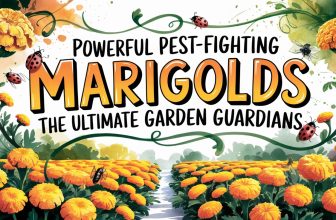Discover the Secret to Beautiful, Eco-Friendly Landscaping
Are you tired of your outdoor space feeling lackluster and environmentally unfriendly? Imagine unlocking the secret to a landscape that not only dazzles the eye but also nurtures the earth.
With a simple addition, you can enhance the beauty of your surroundings while also contributing to a more sustainable ecosystem. As you explore the intricacies of this landscaping secret, you'll uncover how it holds the key to a harmonious blend of aesthetics and eco-consciousness.
Understanding Eco-Friendly Landscaping
If you want to create a more environmentally sustainable landscape, one eco-friendly landscaping secret worth considering is the installation of a rain chain.
Understanding rain gardens and implementing eco-friendly pest control methods are essential aspects of eco-friendly landscaping.
Rain gardens are designed to capture and absorb rainwater, reducing runoff and preventing water pollution.
By incorporating native plants and strategic landscaping, rain gardens can enhance biodiversity and provide habitat for beneficial insects.
Eco-friendly pest control methods focus on natural alternatives to chemical pesticides, such as using beneficial insects, companion planting, and organic repellents.
Benefits of Using Native Plants
Using native plants in your landscaping can provide numerous benefits for your environment and ecosystem. When landscaping with native plants, you can experience the following benefits:
- Sustainability
- Native plants are adapted to the local climate and require less water and maintenance.
- They promote biodiversity and support local wildlife such as birds, bees, and butterflies.
- By reducing the need for pesticides and fertilizers, native plants contribute to a healthier ecosystem.
- Resource Efficiency
- Native plants have deep root systems that help prevent soil erosion and improve water infiltration.
- They contribute to improved air quality by capturing carbon and producing oxygen.
- Using native plants conserves water and reduces the impact on local water resources.
- Aesthetics and Long-Term Value
- Native plants offer a natural and authentic look that complements the local landscape.
- They can increase property value and create a unique sense of place within the community.
Creating a Sustainable Water System
Consider implementing a rain chain to enhance your eco-friendly landscaping and sustainable water management. Rain chains not only add visual appeal but also help prevent erosion, collect rainwater for gardening, and reduce the risk of water damage to your home's foundation. When installing a rain chain, you can choose from various types and materials to suit your preferences. Regular maintenance, such as cleaning to prevent clogging and applying protective coatings, is essential to ensure proper functioning. Additionally, inspecting for damage and trimming nearby vegetation are crucial for optimal performance. By incorporating rain chains into your landscaping, you can efficiently manage water while adding a beautiful and eco-friendly element to your outdoor space.
| Rain Chain Types | Materials Used for Rain Chains |
|---|---|
| Cup rain chains | Copper rain chains |
| Link rain chains | Aluminum rain chains |
| Funnel rain chains | Brass rain chains |
| Bell rain chains | Stainless steel rain chains |
Incorporating Drought-Tolerant Design
Enhance your eco-friendly landscaping further by incorporating drought-tolerant design, building upon the sustainable water management foundation laid by your rain chain installation. To achieve this, consider the following:
- Implement water efficient irrigation systems
- Drip irrigation
- Soil moisture sensors
- Smart irrigation controllers
- Utilize xeriscaping techniques
- Selecting drought-resistant plants
- Mulching to reduce water evaporation
- Grouping plants with similar water needs
Choosing Eco-Friendly Hardscaping Materials
When selecting hardscaping materials for your eco-friendly landscaping, prioritize those made from sustainable and recycled resources. Consider using materials such as permeable pavers, reclaimed stone, and recycled composite decking for your pathways, patios, and other hardscape features. These materials not only contribute to the conservation of natural resources but also add a unique and stylish touch to your outdoor space. Here's a helpful guide to assist you in making eco-friendly hardscaping material choices:
| Eco-Friendly Hardscaping Materials | Description |
|---|---|
| Permeable Pavers | Allows water to filter through, reducing runoff and promoting groundwater recharge. |
| Reclaimed Stone | Salvaged from old structures, reducing the need for new quarrying and processing. |
| Recycled Composite Decking | Made from recycled materials like plastic and wood waste, offering durability and low maintenance. |
Implementing Renewable Energy in Landscaping
When choosing eco-friendly hardscaping materials, you can also consider implementing renewable energy solutions in your landscaping to minimize environmental impact and reduce your dependence on traditional energy sources.
- Reducing Water Consumption:
- Incorporate a drip irrigation system to deliver water directly to the roots, reducing evaporation and water waste.
- Use rain barrels to collect and store rainwater for later use in watering plants and gardens.
- Choose drought-resistant plants and native species that require less water.
- Solar Powered Landscape Lighting:
- Install solar-powered LED lights to illuminate pathways, garden beds, and outdoor living spaces.
- Use motion-sensing solar lights for added security and energy efficiency.
- Opt for solar-powered water features, such as fountains or ponds, to minimize electricity consumption.
Utilizing Rainwater Harvesting Techniques
Consider incorporating rainwater harvesting techniques into your landscaping to conserve water and support sustainable practices.
To start, you can install a rain chain to efficiently collect rainwater. When installing a rain chain, you can opt for a DIY approach using supplies such as a V-hook, or consider using an installation kit for convenience.
Different types of rain chains, including cup, link, funnel, bell, and lotus styles, offer various aesthetic and functional benefits. For materials, copper, aluminum, brass, stainless steel, and iron rain chains are commonly used.
To maintain your rain chain, regular cleaning and inspections are essential to prevent clogging and damage. Additionally, consider applying a protective coating and trimming nearby vegetation to ensure optimal functionality.
Embracing rainwater harvesting through rain chains is a practical and eco-friendly way to enhance your landscaping.
Importance of Soil Health and Composting
Improving soil health through composting is essential for sustainable landscaping practices. To achieve this, consider the following points:
- Improving soil fertility
Composting enriches the soil with essential nutrients, promoting healthy plant growth.
It enhances soil structure, aiding in water retention and reducing erosion.
- Composting techniques
Utilize a mix of green and brown materials for a balanced compost pile.
Turn the compost regularly to ensure proper aeration and decomposition.
Be mindful of the compost's moisture levels to optimize the decomposition process.
Minimizing Chemical Usage in Landscaping
To reduce chemical usage in your landscaping practices, prioritize using natural and organic alternatives for pest and weed control. Minimizing pesticide usage is crucial for maintaining an eco-friendly landscape. Consider using organic fertilizers, such as compost or manure, to nourish your plants and soil without introducing harmful chemicals into your outdoor space.
These alternatives not only provide essential nutrients for your plants but also promote a healthier and more balanced ecosystem. By minimizing chemical usage, you can create a safer environment for your family, pets, and local wildlife while contributing to the overall well-being of the planet.
Embracing natural and organic solutions for pest and weed control will help you achieve a beautiful landscape that's in harmony with nature.
Enhancing Biodiversity in the Landscape
Enhance biodiversity in your landscape by incorporating a variety of native plants and creating diverse habitats for local wildlife. This will attract pollinators and create wildlife habitats, contributing to a healthier ecosystem.
To achieve this, consider the following:
- Plant native flowers, shrubs, and trees to attract pollinators such as bees, butterflies, and hummingbirds.
- Choose a variety of flowering plants that bloom at different times to provide food for pollinators throughout the year.
- Avoid using pesticides and herbicides to protect the health of pollinators and other wildlife.
- Create diverse habitats such as meadows, wetlands, or woodland areas to support a wide range of wildlife species.
Frequently Asked Questions
What Are the Different Types of Rain Chains and Their Specific Benefits?
Different rain chain designs include cup, link, funnel, bell, and lotus styles. Each design offers unique benefits, such as enhancing the aesthetic appeal of your home exterior and reducing erosion and soil compaction.
These eco-friendly alternatives to traditional downspouts also help prevent water damage to the foundation and provide a way to collect rainwater for gardening. Consider the environmental impact when choosing the best rain chain design for your landscaping needs.
Can Rain Chains Be Used in All Weather Conditions, Including Extreme Weather?
Yes, rain chains can be used in all weather conditions, including extreme weather. The durability of rain chains depends on the material.
Copper, aluminum, and stainless steel rain chains are resilient and suitable for various climates. However, it's essential to consider the weight of snow accumulation on rain chains and ensure they're securely installed.
Proper maintenance and care will also help extend the lifespan of rain chains in challenging weather conditions.
Are There Any Specific Maintenance Tips for Rain Chains in Order to Keep Them in Good Condition?
To keep your rain chains in good condition, follow these maintenance tips.
- Regularly clean them to prevent clogging and inspect for damage or loose parts.
- Consider applying a protective coating to prevent tarnishing or rusting.
- Also, trim nearby vegetation to avoid obstruction.
When it comes to weather resistance, it's essential to consider extreme weather conditions and ensure the installation process is done correctly to withstand challenging weather.
How Do Rain Chains Help in Preventing Water Damage to the Foundation of a Home?
To prevent water damage to your home's foundation, rain chains help by guiding rainwater away from the base of your home. This prevents erosion and soil compaction, reducing the risk of water seeping into the foundation.
Plus, rain chains are a great addition to your home decor, adding a unique and beautiful touch to your landscaping. Consider incorporating a rain chain to enhance the aesthetic appeal of your exterior while protecting your home.
What Are the Best Practices for Collecting and Utilizing Rainwater With Rain Chains for Gardening or Other Purposes?
To utilize rain chains for gardening and landscaping, start by collecting rainwater using a rain chain. This eco-friendly practice helps conserve water and prevent soil erosion.
Install a rain barrel at the base of the rain chain to collect the water for gardening. Use the collected rainwater to hydrate your plants, reducing the need for tap water.
This sustainable approach promotes eco-friendly landscaping and conserves precious water resources.
Conclusion
Now that you've learned about the benefits of eco-friendly landscaping and the various techniques to achieve it, it's time to put your knowledge into action.
By incorporating native plants, sustainable water systems, and rainwater harvesting techniques, you can create a beautiful and environmentally-friendly outdoor space.
With a little effort and the right choices, you can transform your landscape into a stunning oasis that benefits both your home and the environment.
Disclaimer: GardeningNorm is a participant in the Amazon Services LLC Associates Program and may receive a commission if you purchase a product via a link on this page.. However, this does not impact our reviews.Read the full disclosure here.



